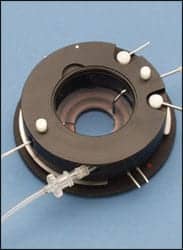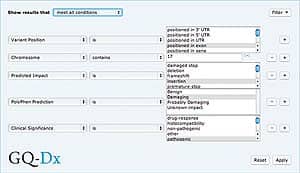 Comparing instruments for efficient functionality and longevity
Comparing instruments for efficient functionality and longevity
BY KAREN APPOLD
When buying a chemistry analyzer, the purchase price comprises just one part of your initial costs. “You must also consider any shipping and installation fees, which may include connecting to a laboratory information system (LIS) and an uninterruptible power supply,” says Joe Neal, marketing communications manager, Awareness Technology Inc, Palm City, Fla. “Training for lab technicians and med techs may be offered at an extra charge as well.”
Of course, there will be some ongoing costs to use the analyzer. For instance, you’ll need liquid consumables such as reagent test kits, diluents, buffers, and cleaning and sterilizing solutions, as well as solid consumables such as reagent and sample containers, cuvettes or other reading vessels, pipette tips, and other sampling devices.
Throughout an analyzer’s life, you may also need to pay for maintenance, service, repairs, and support such as software updates, telephone support, Internet-based diagnostics, up-to-date assays, and more. You might also consider buying a warranty.
Tracy Kelly, marketing manager, Systems, Roche Diagnostics, Indianapolis, says that purchasing facilities request a variety of information. “Some want an all-inclusive price (ie, analyzer, service, reagents, consumables, and so forth), while others want each item broken out separately,” she says.
Most analyzers can process quite a range of tests. However, “No one vendor has every test on one system,” Kelly says.
According to Kevin Barta, marketing manager, product development, Thermo Scientific, Fremont, Calif, the number of analyzers a lab needs depends upon its testing needs.
Here’s a list of questions you may want to ask a manufacturer when considering its product:
• What is the maintenance cost?
• What does the software do?
• How will it interact with the lab’s LIS?
• What quality control (QC) package is
included?
• How easy is the QC to review for techs?
• What is the full test menu?
• What is in development?
• Will this instrument meet a lab’s needs for the next 5 years?
• Does a lab still need an analyzer to cover one or two very important tests?
SOME PRODUCTS THAT ARE AVAILABLE NOW
Here’s a look at some of today’s chemistry analyzer offerings that may take care of your lab’s needs for the next 5 years and beyond.
NOVA BIOMEDICAL’S STAT PROFILE PHOX ULTRA
Nova Biomedical, Waltham, Mass, offers the Stat Profile pHOx Ultra, which can be custom configured for five to 20 tests. Up to 30 specific user-defined subsets (panels) can be created for various patient populations. pHOx Ultra analyzers are compliant with industry-standard POCT 1A and American Society for Testing and Materials’ communication protocols for connectivity.
“These industry standards are used to easily interface pHOx Ultra analyzers to a wide range of connectivity systems, including LIS, histology information systems, and middleware systems,” says Richard Rollins, MBA, product marketing manager. An automated, true QC system eliminates all user steps involved in performing multilevel, true liquid QC, dramatically reducing labor while maintaining the most stringent QC. Meanwhile, an internal quality assurance (IQA) system extends QA measures to every sample and calibration.
IQA performs more than 40 automatic checks during sample and calibration cycles to verify correct performance of sensors, reagents, fluidics, and electronics. The IQA system reports a test parameter only when all 40 performance checks are successful, providing a continual level of QA. A standard feature on all StatProfile pHOx Ultra analyzers is a complete onboard data-management system, allowing data capture and extensive reporting capabilities. Maintenance costs vary based on use and consumable replacement schedule.

The user-friendly software of ChemWell -T, manufactured by Awareness Technology, Palm City, Fla, covers general chemistry testing needs. It offers windows with tabs for entering patient or sample IDs in the database; programming assays; and running assays, panels, and tests. Other features within the software include applications for patient database maintenance, a QC package with control comparative tools, and selections for formatting reports, Neal says.
ChemWell -T uses a file import-export method to make data transfer versatile and adaptable to many LIS systems. QC includes stored control data with options to view and print Levey-Jennings or QC range plots. To review QC, techs simply need to click on a tab to view the window. ChemWell -T utilizes a unique customizable rack system, which can accommodate evolving system pack methods. Minimal cleaning and maintenance is required under normal operating conditions. Lamps and other semiexpendable parts are economical to replace.
With the ChemWell 2902/2910, all assays are read in standard 96-well microplates, which use smaller sample and reaction volumes and can be washed on-board for multiple uses under most circumstances. The ChemWell 2902/2910 has similar attributes and capabilities as the ChemWell -T. ChemWell 2902 is an open system (like ChemWell -T) that can perform a wide range of chemistries, while ChemWell 2910 is a dual-function open system that can perform chemistries and enzyme-linked immunosorbent assays. Awareness Technology is currently working toward integrating chemiluminescence immunoassay and ion-selective electrode electrolyte capabilities into the ChemWell platform, Neal says.
BECKMAN COULTER’S UNICEL DXC AND AU CHEMISTRY SYSTEMS
UniCel DxC Chemistry Systems, offered by Beckman Coulter, Brea, Calif, provide sample and results management, QC monitoring, automated instrument maintenance procedures, as well as diagnostic capabilities and troubleshooting. The system automatically queries the LIS for sample/tests to run, and then transmits completed results, says Steve Ishii, MT(ASCP), CLS, North America senior marketing manager, chemistry systems. The QC package includes comprehensive real-time QC management and Westgard QC rules based on interpretation and color-coded error flagging. It’s easy for techs to retrieve QC results, including daily, monthly, and cumulative statistics.

Beckman Coulter’s AU Chemistry Systems (AU480, AU680, and AU5800) can analyze close to 100 assays in the same categories as the UniCel DxC Chemistry Systems. An open system for user-defined applications is available. Software allows for sample and results management, QC monitoring, automated instrument maintenance procedures, as well as troubleshooting. The system will automatically query the LIS for sample/tests to run, and then transmit completed results. The QC package also rivals that of the UniCel DxC Chemistry Systems.
Scalable instruments allow for low- to very high-volume testing, Ishii says. All AU platforms use the same reagents and the same software, and follow the same processes and reference ranges. Beckman Coulter is currently working on development of next-generation assays for A1c, ISDs, anti-CCP, and cystatin C.
ROCHE DIAGNOSTICS’ COBAS 6000 AND 8000 ANALYZER SERIES
The cobas 6000 analyzer series is ideal for mid-volume labs performing 500,000 to 2.5 million clinical chemistry and immunoassay tests annually, Kelly says. Comprehensive software allows for simple training and movement of lab technologists between labs. The QC package enables easy analysis and storage of all QC data, which is viewable in a graphical format.

Roche Diagnostics is currently developing the following assays: sFLT-1, HBsAg (quant), tacrolimus, sirolimus, cyclosporine, Toxo IgM, CMV IgG/IgM, troponin T 5th generation, PCT, interleukin 6, and syphilis.
The cobas 8000 analyzer series is a good choice for high-volume labs performing more than
2.5 million clinical chemistry and immunoassay tests per year, says Chris Zale, marketing manager, systems, Roche Diagnostics. The software on the cobas 8000 modular analyzer series is easy to learn and operate. The cobas 8000 modular analyzer series includes Data Manager, a package that enables vast flexibility when reviewing QC and patient data. Included with Data Manager is Trace Doc, a feature that allows the operator to do extensive reviews and analysis of the patient, calibration, and QC data. The cobas 8000 modular analyzer series can be connected directly to a lab’s LIS, or more frequently via Roche Middleware Solutions. The QC package allows for easy analysis and storing of all QC data, which is visible in a graphical format. It can also be coupled with Roche Middleware Solutions.
THERMO SCIENTIFIC’S INDIKO AND INDIKO PLUS
Thermo Scientific’s Indiko and Indiko Plus analyzers offer a general chemistry menu. The company sells an array of specialty immunoassays for drugs-of-abuse screening and therapeutic drug monitoring, including immunosuppressant drug monitoring. Reagent kits for the Indiko and Indiko Plus are bar coded for convenience. The instrument can handle a variety of sample matrices, such as urine, oral fluids, serum, and whole blood. The software allows for sample identification, entering requests, performing assays, monitoring calibration, QC runs, reagents, and ensuring full traceability to the result. Both instruments have a bidirection communication interface. QC results are easily accessible, and include Westgard rules. On-site installation and training are included with the analyzer price. Together with the analyzer, consumables are delivered (called the Start-up kit package).
“Some simple daily maintenance is required; minimal monthly maintenance steps can be performed by the local operator,” Barta says. A yearly preventative maintenance visit is necessary. Each year, software upgrades are provided free of charge. The Indiko Plus analyzer has similar capabilities and features as the Indiko. However, the footprint and throughput increases with this slightly larger benchtop model. In addition, the reagent wheel and sample racks are separated, providing more room for samples and reagents.
Karen Appold is a contributing writer for CLP. For more information, contact Chief Editor Judy O’Rourke at [email protected].
For more on chemistry analyzers:See the chemistry analyzers Tech Guide Read the chemistry analyzers Product Spotlight Read: “Automation Offers Big Gains to Labs That Opt to Adopt It”
|




